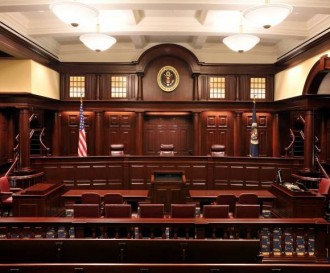
March 24, 2016
Functional Claim Language Does Not Render Apparatus Claim Indefinite For Including Both Method And Apparatus
Patent applications involving electrical and/or computer related inventions often involve functional claim language. For example, software may be claimed in terms of its function. One or more components of an electrical circuit may also be claimed in terms of function in an effort to encompass multiple different types/combinations of circuit components (and sometimes even software) that could be used to provide the same functionality. Functional claim language has been the subject of much debate.
Opponents to the use of functional claim language may argue that apparatus claims having functional claim language are invalid under 35 U.S.C. 112 as being indefinite for including both a method and an apparatus. This concept was the subject of IPXL Holdings v. Amazon.com (Fed. Cir. 2005) among other cases. IPXL Holdings involved the following claim which depended from an apparatus claim:
The system of claim 2 wherein the predicted transaction information comprises both a transaction type and transaction parameters associated with that transaction type, and the user uses the input means to either change the predicted transaction information or accept the displayed transaction type and transaction parameters.
IPXL Holdings stands for the proposition that “[r]eciting both an apparatus and a method of using that apparatus renders a claim indefinite.” Id. In the claim above, the user using the apparatus to perform claimed functions constituted a method of using the claimed apparatus (of the base claim).
IPXL Holdings has prompted some (often opponents to the use of functional claim language) to take the more general position that apparatus claims having functional claim language are invalid as including both a method and an apparatus. This sort of rejection is also sometimes issued by Patent Examiners.
The CAFC, however, has now ruled on the issue. ULTIMATEPOINTER, L.L.C. v. NINTENDO CO LTD. (15-1297), CAFC, March 1, 2016, involved the following claim:
- An apparatus for controlling a feature on a computer generated image, the apparatus comprising: a handheld device including: an image sensor, said image sensor generating data related to the distance between a first point and a second point, the first point having a predetermined relation to the computer generated image and the second point having a predetermined relation to a handheld enclosure; and a processor coupled to said handheld device to receive said generated data related to the distance between a first point and a second point and programmed to use the distance between the first point and the second point to control the feature on the image.
The district court earlier concluded that the claim limitation of “a handheld device including: an image sensor, said image sensor generating data . . .” rendered claim 1 invalid as indefinite under 35 U.S.C. 112. The lower court reasoned that “although the claims were directed to an apparatus (the handheld device including an image sensor), the claims also contained a method step (that the image sensor generates data). In other words, the lower court held that claim 1 (reciting handheld device including an image sensor generating data) was invalid as indefinite for including both an apparatus (handheld device including an image sensor) and a method (image sensor generating data).
In Ultimate Pointer, however, the CAFC reversed the district court’s holding of indefiniteness. “Like those claims, the ‘data generating’ limitations only indicate that the associated structures have this capability (for example, the image sensor and processor in claim 1) and do not require that any data be actually generated by the user.” The CAFC also stated that, unlike claims in other cases involving mixed method/apparatus claims (specifically citing IPXL and Katz) “the claims do not recite functionality divorced from the cited structure. Therefore, the claims do not reflect an attempt to claim both an apparatus and a method, but instead claim an apparatus with particular capabilities.”
Pursuant to Ultimate Pointer, the particular capabilities of features can therefore be included in apparatus claims. In view of IPXL Holdings, however, apparatus claims that also include a method of using the apparatus may be problematic.





































